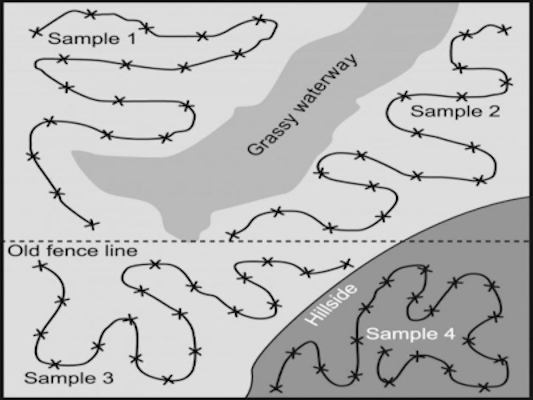The drought conditions that occurred throughout large parts of Iowa in 2020 may have resulted in high levels of SCN reproduction occurring in soybean fields, allowing SCN numbers to increase to very damaging levels. The link between high SCN reproduction and hot, dry soils was discovered in data from more than 25,000 research plots in Iowa State University experiments conducted over 15 years.
Sample fields where soybeans were grown in 2020
If fields have never been checked for SCN or have not been sampled before or after the last three soybean crops, the results of soil samples collected this fall after soybeans may be real eye-openers. The lack of above-ground symptoms, loss of effectiveness of resistance, and high reproduction in dry soils could have resulted in very high end-of-season population densities of the nematode this year. It is useful to know what the SCN population densities are in fields this fall even if soybeans will not be grown in these fields in 2021. Numbers may be so high that planning for multiple years of a nonhost crop might be warranted in the rotation.
Sample fields in which soybeans will be grown in 2021
Although SCN population densities would not have increased in fields where corn was grown in 2020, it is important to know what SCN population densities are present in the soil if soybeans will be grown in these fields in 2021.
Depending on the results of the soil samples, farmers and agronomists may want to search for effective resistant soybean varieties and nematode-protectant seed treatments. Data on yields and SCN control of hundreds of SCN-resistant soybean varieties in Iowa State’s SCN-resistant soybean variety trials are available online here.
If soil sample results reveal that SCN population densities are greater than 12,000 eggs per 100 cc of soil, it would be advised to grow another year of corn (a nonhost) in 2021.
Guidelines for collecting good soil samples
- Use a soil probe (figure 1), not a spade, to collect soil cores.
- Collect 15 to 20 8-inch-deep soil cores from every 20 acres.
- Collect samples from management zones in the field, if possible (figure 2).
- Combine and mix soil cores then fill a soil sample bag with the soil.
Where to send the samples for analyses
There are numerous laboratories in Iowa that process soil samples to provide SCN population densities. Most private soil labs offer this service. Also, the Iowa State University Plant and Insect Diagnostic Clinic processes samples for SCN. Click on Iowa on the map at this webpage for a list of laboratories in Iowa that process SCN soil samples.

Figure 1. Use a soil probe to collect 10 to 20 8-inch-deep soil cores to represent a single SCN soil sample

Figure 2. Collect separate multiple-core soil samples from different management zones within a field to account for possible differences among the areas.
Source : iastate.edu